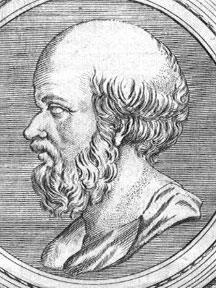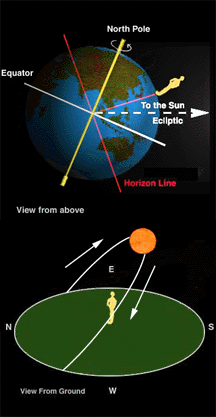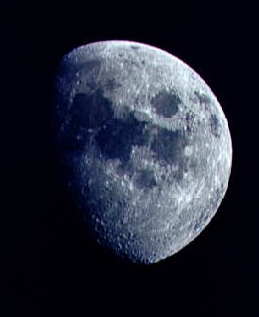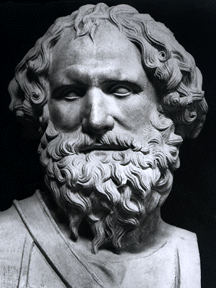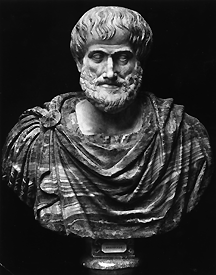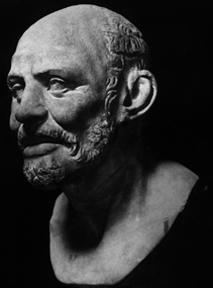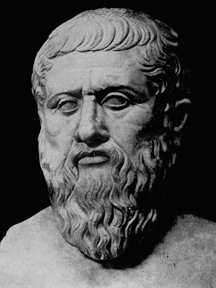Click on image for full size
Public domain image.
Related links:
Eratosthenes
Eratosthenes was an ancient Greek astronomer, geographer, and mathematician. He lived from 276 to 194 B.C. Eratosthenes is most famous for making the first accurate measurement of the circumference of the Earth. He lived and worked for most of his life in the city of Alexandria in Egypt.
Eratosthenes was born in 276 B.C. in the city of Cyrene which is in the modern-day country of Libya. He apparently studied for a few years in Athens. He studied and spent most of his adult life in Alexandria, where he died in 194 B.C. at the age of 82 years. Some sources claim that Eratosthenes intentionally starved himself to death after going blind. He never married.
Eratosthenes is most famous for making the first accurate measurement of Earth's circumference sometime around 240 B.C. He knew that at noon on the summer solstice the Sun was directly overhead in the Egyptian town of Syene, for there was no shadow at the bottom of a well in Syene. By measuring the length of the shadow of a tall tower, on the solstice, in his home city of Alexandria, and by determining the distance between Syene and Alexandria (about 800 km), he was able to calculate the circumference of the Earth. There is some historical uncertainty regarding the actual size of the distance units Eratosthenes used (called "stadia"), so we are not absolutely certain how accurate his results were. He may have been correct to within 1%, or he may have been off by about 16%. Either way, Eratosthenes was the first to make a reasonably accurate determination of the size of our home planet!
Eratosthenes became the second head librarian of the famous Library of Alexandria in 236 B.C. Besides his determination of Earth's circumference, Eratosthenes also made several other important contributions to the fields of mathematics, geography, and astronomy. He devised a mathematical technique, now referred to as the Sieve of Eratosthenes, that provides a straightforward way to find all prime numbers up to a specified integer. He compiled one of the best maps of his day of what he thought was the whole world, although it actually only shows the area around the Mediterranean and parts of Asia. Eratosthenes devised a system of latitude and longitude, and a calendar that included leap years. He invented the armillary sphere, a mechanical device used by early astronomers to demonstrate and predict the apparent motions of the stars in the sky. He may have measured the distances from Earth to both the Moon and to the Sun, but the historical accounts of both deeds are rather cryptic. Eratosthenes also compiled a star catalog that included 675 stars.
A crater on Earth's Moon is named after Eratosthenes, as is a seamount in the eastern Mediterranean Sea.


